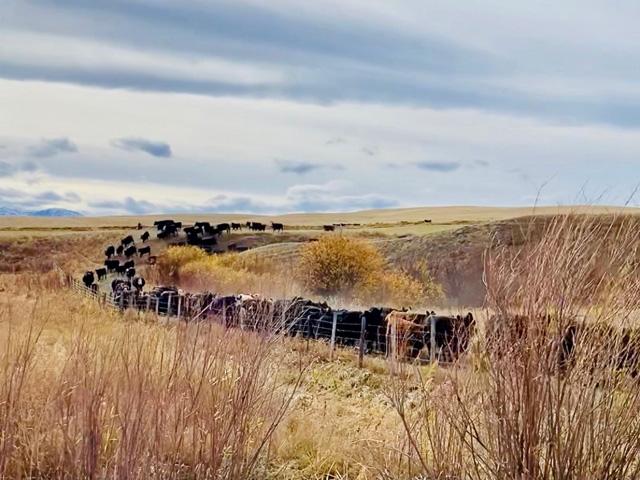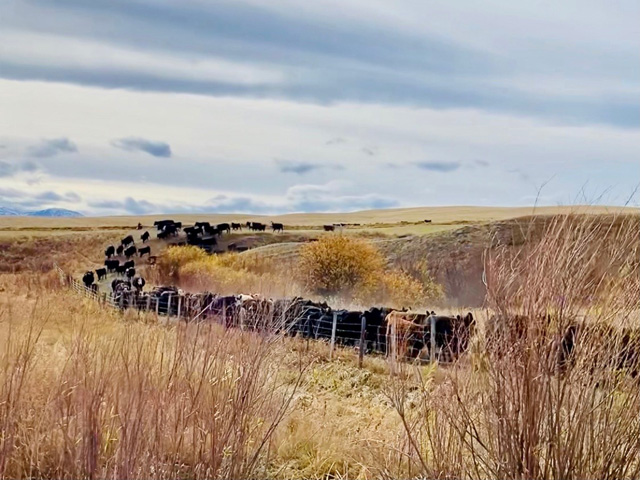Ag Weather Forum
Drought Could Mean Cow Herd Reduction
Drought in 2021 has at least one livestock expert concerned about the longer-term impact on U.S. beef cow numbers. Oklahoma State University (OSU) Extension livestock marketing specialist Derrell Peel detailed those concerns in a recent posting of the OSU Cow-Calf Corner newsletter.
Peel noted the end of November featured 69% of the U.S. in abnormally dry or worse condition with more than 53% in some degree of drought (D1 to D4) according to the U.S. Drought Monitor. Another measure of drought intensity, the Drought Severity and Coverage Index (DSCI), averaged 171 for the year through the end of November. The final week of November had a DSCI value of 181.
In the western U.S., Peel noted an average DSCI value of 213 for the year to date, with end of November readings ranging from 371 in Nevada to 401 in California. In the High Plains, the DSCI number had an average for the year of 208, with late November values ranging from 213 in North Dakota to 278 in Wyoming.
Drought severity could be intense enough to affect beef cattle operations, in Peel's view. "The drought values above indicate how beef cattle operations are affected in various locations. However, broader cattle market impacts may occur depending on the severity of drought and the size of the cow herd in various regions," he wrote. "Beef cow slaughter is up 8.6% for the year to date and includes some drought liquidation but from exactly where is unclear."
P[L1] D[0x0] M[300x250] OOP[F] ADUNIT[] T[]
Dr. Peel created an ad-hoc index that incorporates drought conditions as measured by the DSCI and the number of beef cows in the states that make up the West and High Plains regions. "With drought impacts heavily weighted, the four states of North Dakota, Montana, California and South Dakota show the greatest likely impacts on the U.S. beef cow herd in 2021, with lesser national impacts in Utah, New Mexico, Oregon, Wyoming, Nevada and Colorado," he wrote. "The annual cattle [USDA inventory] report, due out Jan. 31, 2022, will reveal exactly where and how much beef cow inventories changed along with other cattle inventory data."
Talk of drought during the winter season is usually not a lead topic unless the winter wheat grazing situation gets brought up. But this 2021-22 winter season is different, Peel wrote. "However, the extent and level of drought in the U.S. at this time is troubling because of the potential for drought to extend into the next growing season, at least in some regions. With dry conditions persisting since 2020 in some regions, many beef cattle operations have already made significant adjustments and will have very little flexibility if the current drought extends into 2022."
The possible impact is cow herd reduction rivaling that of recent history. "This could result in another severe round of cow liquidation in the first half of next year. A decade ago, severe drought caused the unplanned liquidation of some two million beef cows and affected cattle markets for several years, arguably up to the current time. It is possible it could happen again," Peel concluded.
Ten years ago in 2011, disastrous drought in the Southern Plains led to an extensive cow herd reduction. That helped set the stage for record beef cattle prices in 2014. In the week ended Nov. 29, 2014, the 5-area live steer price was a record $171.38 per hundredweight (cwt); the month of November weighted average reached a record $169.50 per cwt. Live cattle futures reached a record high of $171.00 per cwt on Nov. 17, 2014, with feeder cattle futures topping at $241.65 per cwt on Oct. 9, 2014. Finally, bred cows and heifers in 2014 soared to $3,000 per head for an all-time high.
DTN Livestock Analyst ShayLe Stewart and DTN Livestock Market Reporter Linda Nellson contributed to this blog item.
Bryce Anderson can be reached at Bryce.anderson@dtn.com
Follow him on Twitter @BAndersonDTN
(c) Copyright 2021 DTN, LLC. All rights reserved.






Comments
To comment, please Log In or Join our Community .